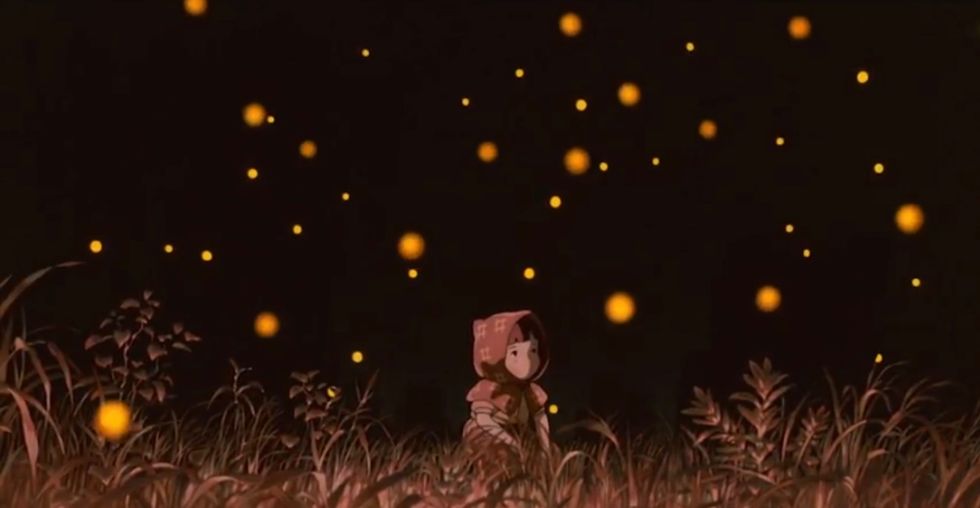"Grave of the Fireflies," a movie made by Isao Takahata, is a heartbreaking one. "Grave of the Fireflies" is a gorgeous Japanese movie made in 1988 and accentuates the sorrow and apocalyptic atmosphere of war and youth.
The story follows Seita, a teenage boy who has a responsibility to care for his sister, Setsuko in the time of war in Japan. The film contains scenery that comes off gorgeous in a world that's savaged and mutualized by weaponry and war. I believe the director's goal was to emphasize the hardship and work that's put on people at times of anarchy, as Seita and Setsuko try to find the light between the darkness in their atmosphere. The relationship between both siblings shows happiness and bliss as they laugh, and work together to treat each other through emotion, care, and empathy. The movie portrays the siblings in a youthful manner and exaggerates their youth to show how young and strong they are yet having to maintain themselves through survival.
The film's imagery had warm toned colors like orange and red hues that made the characters stand out, as the colors built an angry tone through the crimson saturation that highlighted the atmosphere. The setting was at a gorgeous stand, with the backgrounds and foregrounds looking painted like a Claude Monet Painting, while the characters would be melancholic within a gorgeous setting. The context of the movie takes place within a time of war, specifically World War II, and the poverty that people are put through within the loss of their homes and families.
The soundtrack of the movie built an aesthetic energy that enhanced the emotions of the protagonists, with synths toned Japanese songs that flow in with the pace of the movie starting out in a positive and bloomy way and then shifting to a melancholic and more mourning tone. This was done gorgeously, as the symbolism behind all the music helped the audience including myself feel the emotion of the protagonists and allowed me to feel empathy for their tragedy in a vivid manner.
One of the most successful visual aesthetic manipulations in the film is when Setsuko kneels down and starts weeping into her arms, while Seita tries to cheer her up by spinning around and around over a pull-up bar. The scene showed a mixture of emotions that flowed perfectly, as the dynamic between the two siblings was enhanced with the extreme wide shots of the setting they were in. The setting was a complete wasteland, with destroyed buildings and complete rupture around the horizons, although the dynamic of the siblings made the scene have a more positive and gorgeous aura with the laughter of Seita trying to influence Setsuko. This shows that even through the worst and complete emptiness of their surroundings, the two still try to help build each other's moods.
Another beautifully constructed visual aesthetic manipulations were the fireflies that Seita and Setsuko caught. The mature fireflies that surrounded them provided an emit light that shined like yellow balls of glow, in a rather azure and dark background. The fireflies were used as a symbol of impermanence as their lifespan was short-lived when the siblings would catch them and allow them to flutter around freely.
The use of the fireflies is a clear reflection of the many youthful deaths that occurred in the war, as the fireflies represent the human soul and the short lifespan represents the people going through the damage of the war. The fusion of melancholy and the youthful joy within "Grave of the Fireflies" allows it to be a 90-minute moving painting of the tale of survival between two kids trying to help each other in a world of war. Heart-breaking and breathtaking.
10/10

















